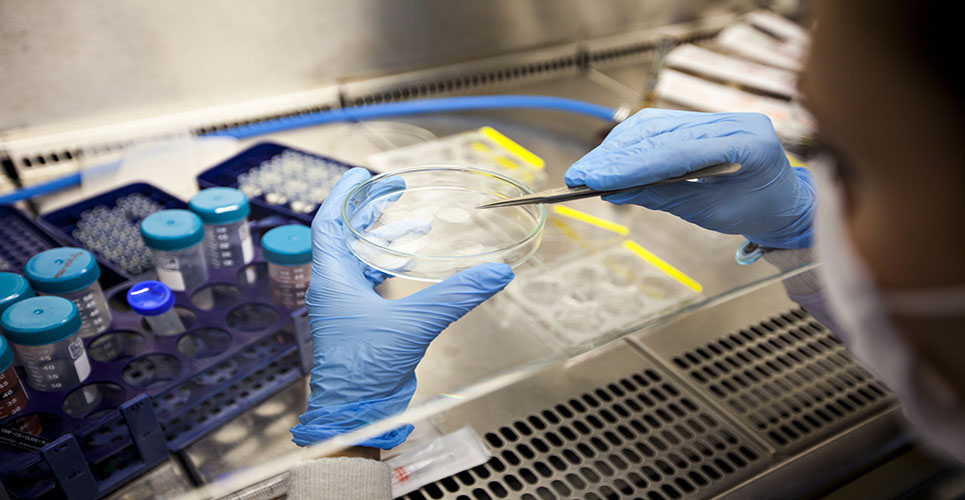teaser
More than half of highly treatment-experienced patients who received maraviroc, a chemokine antagonist developed by Pfizer, achieved a viral load below 400 copies/ml when the drug was added to an optimised background regimen. Interim 24-week results from the Motivate 1 and 2 studies were presented on 27 February at the Fourteenth Conference on Retroviruses and Opportunistic Infections in Los Angeles, US.
Motivate 1 and 2 are ongoing placebo-controlled phase IIb/III studies, designed to investigate the safety and effectiveness of the CCR5 inhibitor, maraviroc. The CCR5 receptor is used by HIV to gain entry to CD4 T-cells, and blockade of this target can reduce viral load. Maraviroc is the first drug of this class to reach phase III studies, and will be reviewed for licensing by US and European regulatory authorities within the next few months.
Both studies are of similar design and involve highly treatment-experienced individuals with CCR5-tropic HIV. Results from 601 individuals in the Motivate 1 study and 475 patients in the Motivate 2 trial were presented to the conference. The studies have the same design, but whereas the Motivate 1 study only recruited patients in the US and Canada, Motivate 2 also includes patients from Europe and Australia.
The study recruited individuals with CCR5-tropic HIV and viral loads above 5,000 copies/ml on current treatment. All participants had resistance to at least one agent from each of the three major drug classes, including at least two protease inhibitors.
In both studies, patients were provided with background therapy optimised by resistance testing. They were then randomised to receive either a placebo, or a once-daily 300mg dose of maraviroc, or a twice-daily 150mg dose of the drug.
The dose of maraviroc that patients in the treatment arms of the study received was determined by the drugs in their background regimen. Individuals taking a ritonavir-boosted protease inhibitor other than tipranavir, or the NNRTI delavirdine (which is not licensed in the UK), were provided with a 150mg dose of maraviroc, while all other patients received a 300mg dose of the drug.
At baseline, the characteristics of patients in the three arms of both trials were broadly similar. In the Motivate 1 study, median baseline CD4 cell count was between 150 and 168 cells/mm3, with median baseline viral load being approximately 65,000 copies/ml. Between two-thirds and 75% of patients in Motivate 1 had an optimised background regimen consisting of two or fewer active drugs. Median baseline CD4 cell count varied between 174 and 184 cells/mm3 in patients in the three arms of the Motivate 2 study, and their median baseline viral load was also in the region of 65,000 copies/ml. Approximately two-thirds of patients in this study had two or fewer active drugs in their regimen other than maraviroc.
After 24 weeks of treatment, 31% of patients in the placebo arm of the Motivate 1 and 23% of patients randomised to receive the placebo in the Motivate 2 study had a viral load below 400 copies/ml. Significantly more patients treated with once-daily maraviroc achieved this outcome in both trials: 55% in Motivate 1 (p<0.001) and 55% in Motivate 2 (p<0.001), as did patients treated with drug twice daily (Motivate 1: 60%, p<0.001; Motivate 2, 61%, p< 0.001).
The investigators then examined how many patients achieved a viral load below 50 copies/ml. A quarter of those who received the placebo in Motivate 1 and 21% of placebo recipients in Motivate 2 achieved this outcome. But once again, significantly more patients who received maraviroc either once daily (Motivate 1: 42%, p=0.0006; Motivate 2: 46%, p<0.0001), or twice daily (Motivate 1: 48.5%, p<0.0001; Motivate 2: 41%, p=0.0005) experienced a fall in their viral load to below 50 copies/ml.
Gains in CD4 cell count were also significantly different between the placebo and treatment arms in both studies. There was a mean increase of 52 cells/mm3 among the placebo recipients in the Motivate 1 study, compared to mean gains of 107 cells/mm3 among patients who received the drug once-daily and 111 cells/mm3 twice-daily (both p<0.0001 versus placebo). In the Motivate 2 study, mean CD4 cell count increased by 64 cells/mm3 among patients who received the placebo, but by 112 cells/mm3 in the patients treated with once-daily maraviroc and 102 cells/mm3 among patients who received the drug twice-daily (both p<0.0001 versus placebo).
Participants were stratified at baseline according to viral load above or below 100,000 copies/ml and according to T-20 treatment. Subgroup analyses showed no difference in response to maraviroc according to baseline viral load or T-20 treatment.
When the results were analysed according to the number of active agents in the background regimen, participants with no active agents showed a trend towards greater likelihood of viral suppression in the twice-daily arm (29% vs 18% for once-daily treatment and 3% for the placebo group), but such a difference between the two doses was not apparent when active agents were present in the background regimen.
The number of treatment discontinuations in both studies was broadly similar in all three arms, and a similar low number (between two and 17) of patients in the three arms of both studies developed new AIDS-defining illnesses. Although 12 patients died in the two studies (four in Motivate 1, eight in Motivate 2), none of the deaths were related to the study medication. Nor was mortality significantly different between the three arms of either study.
AidsMap News 28/02/2007

